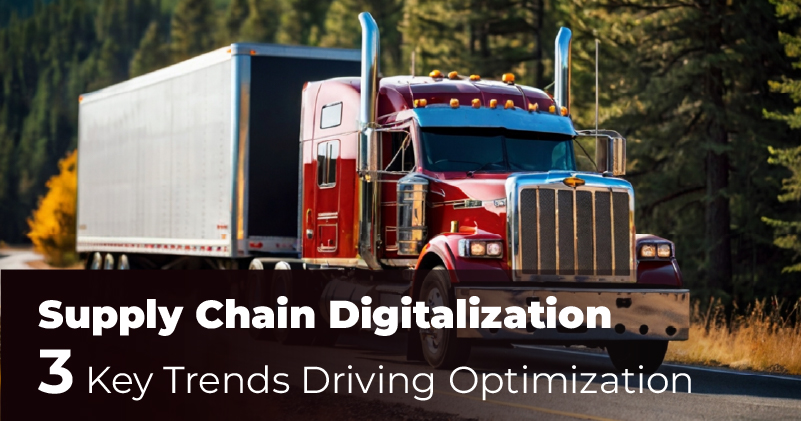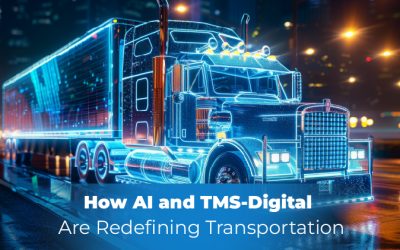
The global supply chain landscape is undergoing a digital revolution. Companies are moving away from traditional models and embracing cutting-edge technology to enhance efficiency, increase transparency, and build resilience. Supply chain digitalization—the process of integrating digital tools and automation into supply chain operations—is at the core of this transformation.
According to Gartner, over 75% of large enterprises will have adopted digital supply chain execution by 2026. In an era of increasing disruptions due to geopolitical issues, climate change, and global pandemics, businesses must leverage technology to ensure agility and competitiveness.
Below, we explore three key technology trends driving supply chain digitalization and how they help optimize operations.
What is Supply Chain Digitalization?
Supply chain digitalization refers to the use of advanced digital technologies to enhance supply chain visibility, automate processes, and improve decision-making. It involves integrating real-time data analytics, artificial intelligence (AI), Internet of Things (IoT) devices, and cloud-based solutions to create a more agile and efficient supply chain.
By harnessing digital solutions, companies can predict disruptions, optimize inventory, and streamline logistics, leading to reduced costs and improved customer satisfaction. Digital supply chains enable businesses to react proactively to changes, ensuring resilience and long-term success.
3 Key Technology Trends Optimizing Supply Chain Digitalization
-
Data Analytics: The Backbone of a Digital Supply Chain
Data analytics plays a crucial role in modern supply chain management. Without accurate insights, companies struggle to make informed decisions. Research by McKinsey shows that businesses utilizing advanced data analytics can cut supply chain costs by up to 15% and improve service levels by 65%.
How Data Analytics Optimizes Supply Chain Digitalization:
- Predictive Insights: Helps forecast disruptions before they occur, allowing companies to take proactive measures.
- Inventory Optimization: Ensures accurate demand forecasting, reducing excess stock and avoiding shortages.
- Enhanced Logistics Management: Improves routing, transportation planning, and warehouse efficiency through real-time data.
Leading global companies like Amazon and Walmart leverage real-time analytics to ensure that products are delivered on time while minimizing waste and inefficiencies. As supply chains become increasingly complex, data-driven decision-making is essential to maintaining smooth operations.
-
Supply Chain Orchestration: Maximizing Operational Efficiency
Orchestration refers to the seamless integration of supply chain functions such as procurement, manufacturing, logistics, and customer fulfillment. A well-orchestrated supply chain acts as a centralized command center, enabling real-time decision-making and automation.
Key Benefits of Supply Chain Orchestration:
- Shorter Lead Times: Studies by Deloitte indicate that supply chain orchestration can reduce lead times by 30-50%.
- Improved Coordination: Enhances communication between suppliers, manufacturers, and distributors for streamlined operations.
- Elimination of Silos: Provides a unified view of supply chain activities, eliminating inefficiencies caused by fragmented data.
Companies using digital twins—virtual models of physical supply chains—can simulate different scenarios to optimize production, warehousing, and transportation. This data-driven orchestration ensures businesses can rapidly adapt to changing market conditions, ultimately improving customer satisfaction and reducing costs.
-
 Generative AI: Transforming Forecasting & Decision-Making
Generative AI: Transforming Forecasting & Decision-Making
Generative AI is revolutionizing supply chain planning and optimization. Unlike traditional AI models that rely solely on past data, generative AI can create new insights by simulating various scenarios and identifying optimal solutions.
How Generative AI Enhances Supply Chain Digitalization:
- More Accurate Demand Forecasting: AI-powered algorithms analyze vast datasets to improve predictions and reduce forecasting errors by up to 50% (PwC study).
- Automated Supply Chain Planning: AI-driven models adjust production schedules, warehouse allocations, and transportation plans in real-time.
- Cost Reduction: Optimizes inventory management and procurement, lowering overall supply chain costs by 10-20%.
Retailers and manufacturers are already using generative AI to predict demand surges and adjust their supply chains accordingly. Additionally, AI-driven chatbots are automating supplier negotiations, expediting procurement processes, and boosting overall efficiency.
The Future of Supply Chain Digitalization
The next phase of digital supply chains will be shaped by cutting-edge technologies such as AI, blockchain, and IoT. Businesses will move toward fully autonomous supply chains, where AI-powered systems make real-time decisions with minimal human intervention.
Key Innovations on the Horizon:
- Blockchain for Transparency & Security: Ensures secure transactions, reduces fraud, and improves compliance.
- IoT for Real-Time Visibility: Smart sensors will provide real-time shipment tracking and inventory monitoring, reducing inefficiencies.
- Sustainable Digitalization: Companies will use digital tools to minimize waste, lower carbon footprints, and develop eco-friendly logistics strategies.
By embracing these advancements, businesses can build resilient, cost-effective, and sustainable supply chains that thrive in a rapidly evolving global market.
Conclusion
Supply chain digitalization is no longer an option—it is a necessity. The integration of data analytics, orchestration, and generative AI is driving this transformation, helping businesses optimize operations, reduce costs, and improve efficiency.
As the digital revolution continues, companies that fail to embrace these innovations risk falling behind. Investing in the right technology today like TMS-Digital ensures a more agile, responsive, and future-ready supply chain.
Want to stay ahead in supply chain digitalization? Contact TMS-Digital today and schedule a demo to see how our cutting-edge solutions can transform your logistics operations.









